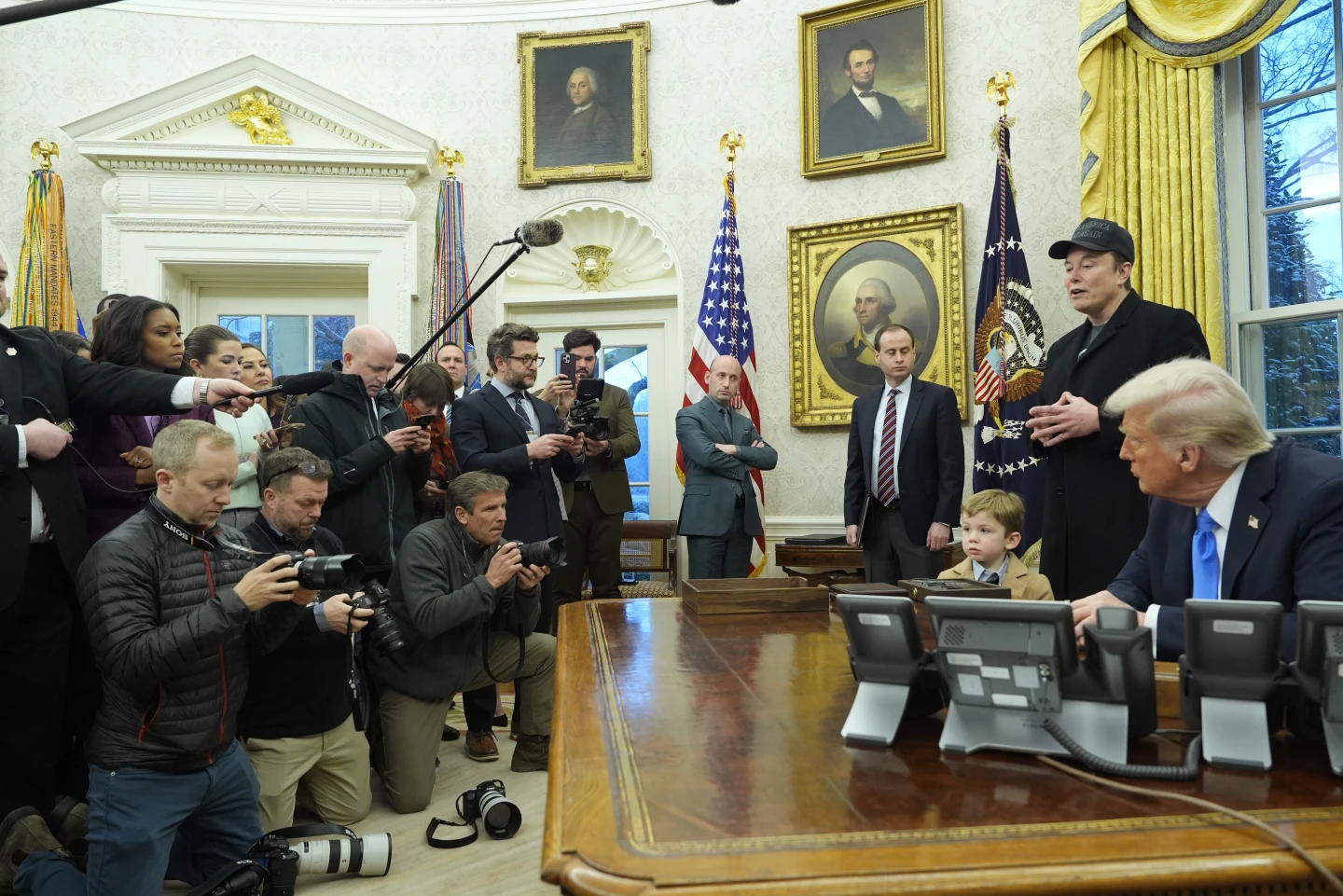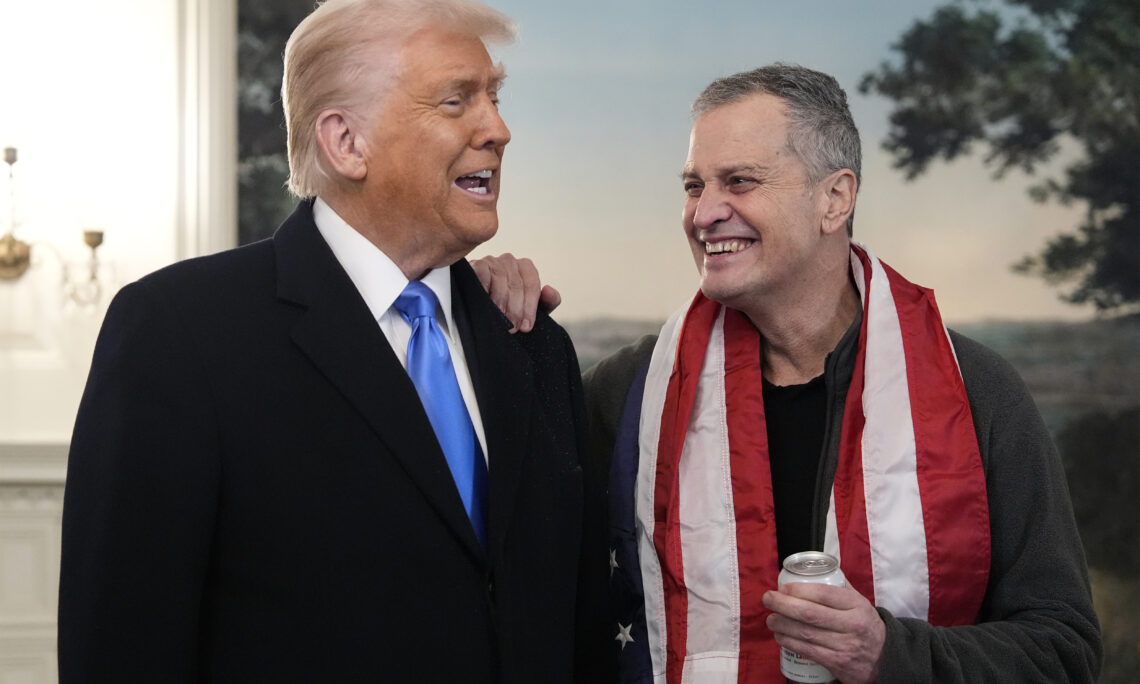President Trump has insisted that his new tariffs on America’s largest trading partners, including Canada, Mexico, and China, will not lead to higher prices for American consumers.
Instead, he argues that foreign countries will bear the cost. However, a deeper look into how tariffs function suggests a different reality.
Trump’s decision to impose tariffs — 25% on goods from Canada and Mexico, and 10% on Chinese imports — has been a hallmark of his economic strategy. He has pushed forward with these extensive measures, claiming that foreign countries, particularly China, will pay for them. This assertion, however, has been met with skepticism, especially by US businesses and experts.
A tariff is essentially an extra cost imposed on foreign goods entering the United States. The importer, the entity responsible for bringing these goods into the country, pays the tariff. This is usually not based on the retail price but rather on the cost at which the goods are purchased before being marked up for sale.
Importers, who can be US or foreign companies, handle the payment of the tariff fees, which are collected by US Customs and Border Protection. The Trump administration has also floated the idea of creating a new agency to manage these revenues.
Richard Mojica, a customs lawyer, notes that the importers of record are typically US companies, and these businesses have expressed frustration with Trump’s claim that foreign countries are footing the bill. For example, Arnold Kamler, chairman of Kent International, a company that imports bicycles from China, has directly felt the impact of the tariffs, stating that he has been paying tariffs since 2018.
“If somebody in China wants to pay it, I’d be happy, but we’re paying it,” Kamler said.
So, who bears the ultimate cost of these tariffs? Importers have a few options. They can absorb the cost themselves, which could erode their profit margins, or they can try to pass the increased cost on to consumers. In some cases, large businesses may be able to negotiate with suppliers to absorb the tariff, but small businesses, with limited purchasing power, are less likely to do so.
Economic studies of Trump’s previous tariffs, particularly those on Chinese imports, show that much of the cost was passed on to American consumers. In some cases, this was done through higher prices at the store. Kamler, for instance, explained that the tariffs on Chinese goods forced him to raise his prices, stating that it was not “inflationary,” as some have claimed — it was simply a direct result of the tariffs.
While the tariff’s aim is to raise the price of foreign goods to protect domestic industries, some economists, including Wendy Edelberg from the Brookings Institution, explain that the goal is precisely to make imported goods more expensive to ensure US manufacturers can remain competitive.
There is also an argument that the effects of tariffs could be offset by a stronger US dollar, which may increase the purchasing power of Americans. This would counterbalance the added costs of tariffs by allowing consumers to buy more foreign goods for the same price. However, economists warn that this could hurt US exports, as a stronger dollar would make American products more expensive abroad.
Estimates from organizations such as the Tax Foundation suggest that the new tariffs could increase household expenses significantly, adding hundreds of dollars to consumer costs. By 2025, tariffs on goods from Canada and Mexico alone could cost an average American household over $800.
This doesn’t take into account the potential impact of the removal of the “de minimis exemption,” which had previously allowed small shipments (under $800) to enter the US tariff-free. This change is particularly impactful for goods from China, as many low-cost items previously exempt will now be subject to tariffs.
Despite these potential increases in costs, President Trump has maintained that the long-term benefits will outweigh the short-term challenges. He has been steadfast in his belief that these actions will ultimately strengthen the US economy by encouraging domestic production and reducing dependency on foreign goods.
However, economists predict that tariffs could slow economic growth in the US By raising costs for consumers and businesses, tariffs could lead to a reduction in overall spending, negatively impacting GDP. For instance, researchers at Goldman Sachs estimate that tariffs on goods from Canada and Mexico could lead to a 0.7% rise in prices, while also reducing US GDP by 0.4%. Other estimates suggest that the broader economic impact could result in slower growth and rising inflation.
President Trump’s approach to trade and tariffs is undoubtedly ambitious. While it aligns with his broader “America First” philosophy, designed to bolster domestic industries and reduce foreign influence, it also comes with risks. The new tariffs represent the most significant protectionist measures in recent history, shaking up decades of trade agreements and supply chain arrangements.
The potential consequences of these tariffs are far-reaching. They threaten the intricate supply chains between the US, Canada, Mexico, and China, and could ultimately undermine US manufacturing competitiveness globally. In industries such as automobiles, where parts flow seamlessly between North America, the tariffs could lead to higher costs and job losses.
Trump’s trade policies have also drawn international pushback. Canada, Mexico, and China have already indicated that they will retaliate, which could further escalate the situation. In fact, Trump’s actions could lead to the disintegration of the carefully crafted trade agreements such as the US-Mexico-Canada Agreement (USMCA), which was designed to modernize trade between the three countries.
With input from the New York Times and Bloomberg.








